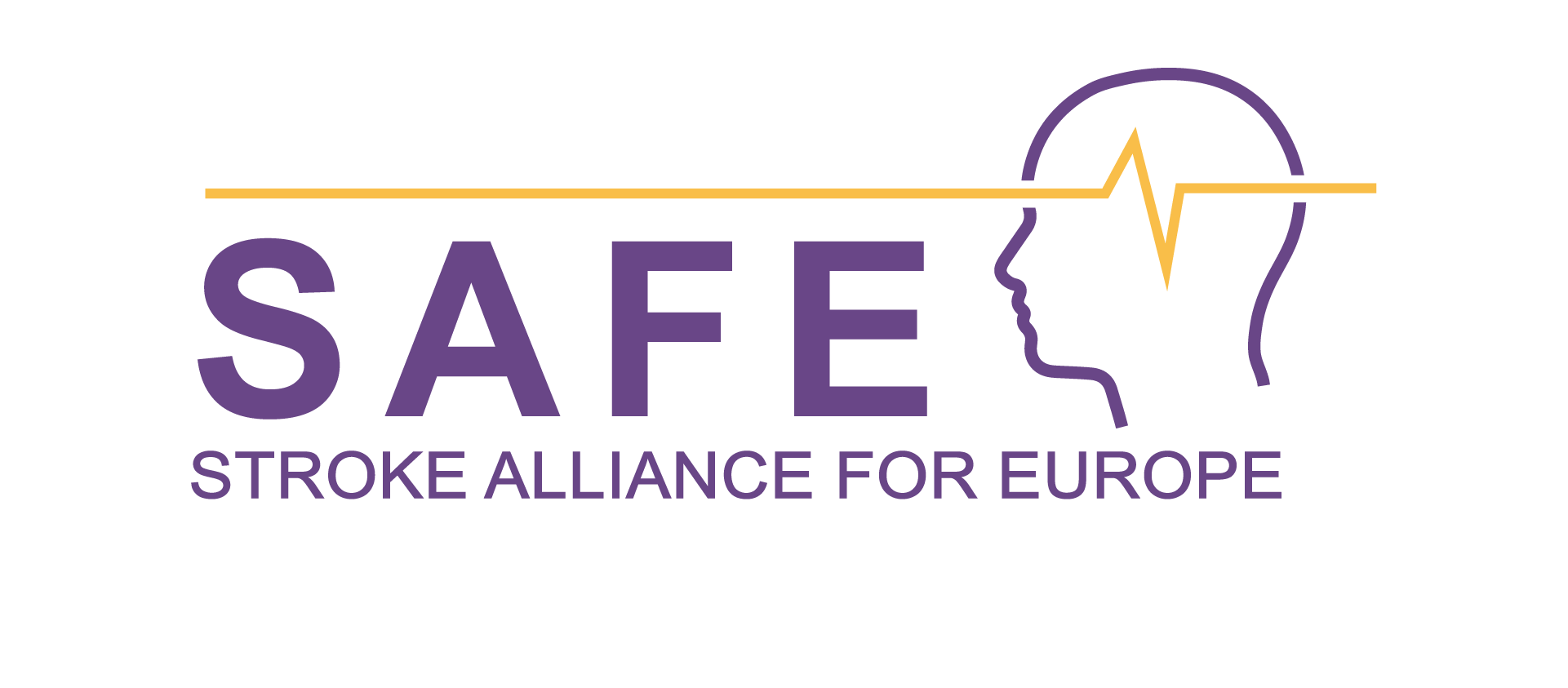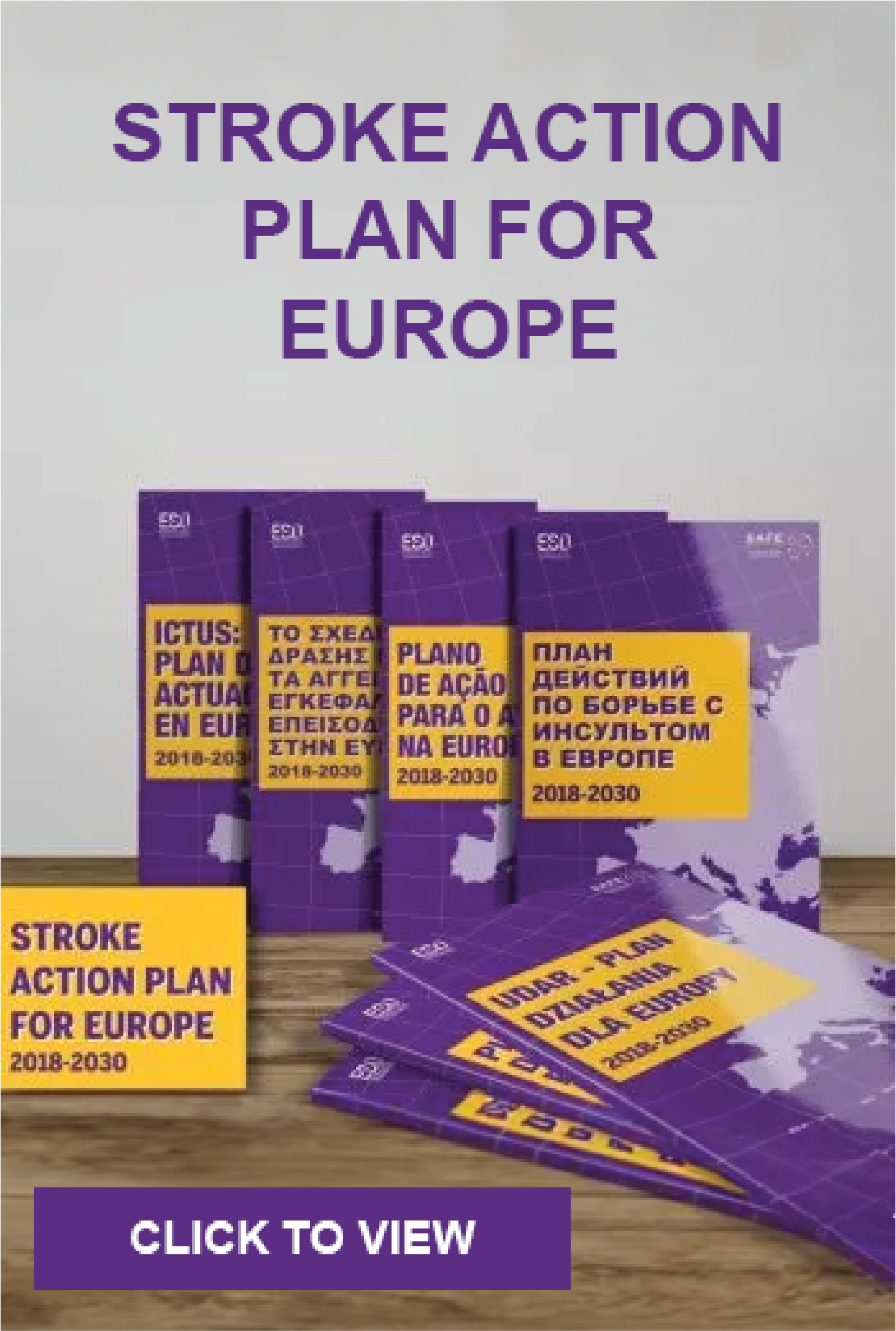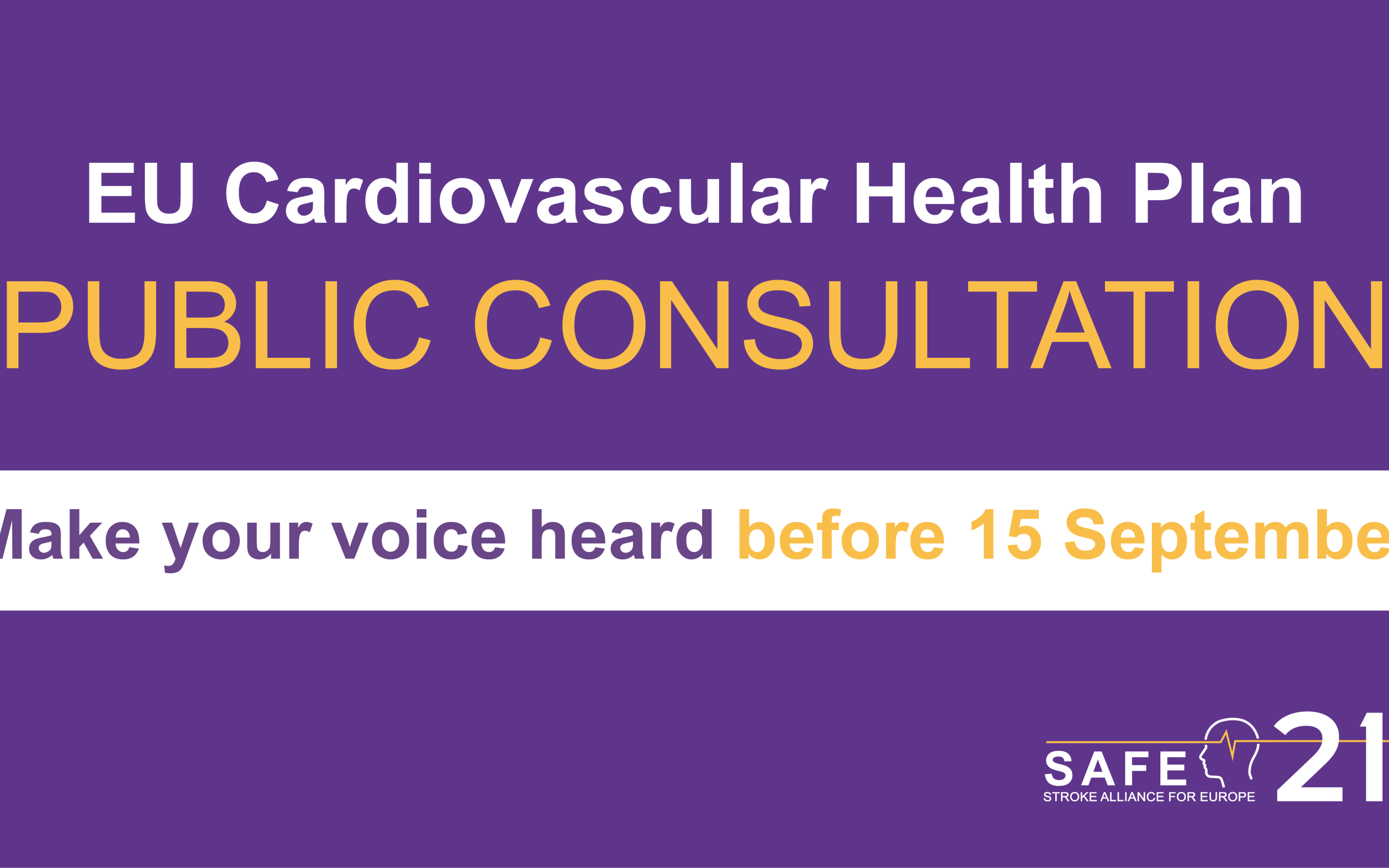
Aug 14, 2025
The European Commission has launched its public consultation on the EU Cardiovascular Health (CVH) Plan, and the deadline to respond is 15 September 2025.
This consultation is a critical opportunity to ensure that stroke, from prevention and acute care to rehabilitation and life after stroke, is fully integrated into the EU’s future cardiovascular strategy.
Why this matters
Cardiovascular diseases, including stroke, remain the leading cause of death and disability in Europe. The CVH Plan aims to:
- Prevent disease by addressing unhealthy behaviours and reducing risk factors
- Improve early detection and screening through EU-wide protocols, digital tools, and personalised treatment
- Enhance management, care, and rehabilitation, including non-medical long-term support for survivors
The plan will also explore the potential of emerging technologies, data-driven approaches, artificial intelligence and the European Health Data Space to create more predictive, personalised and equitable care.
How you can help
SAFE encourages its members, partners and the wider stroke community to respond to the consultation. Your input will help highlight the burden of stroke in your country and the urgent need for stronger EU action.
When submitting your feedback, you may wish to:
- Provide data and examples from your national context
- Suggest concrete actions and identify who should implement them
- Emphasise the importance of long-term, non-medical support for people affected by stroke
- Attach any relevant research or policy papers
Submit your feedback
To take part, click the button below and select ‘Give Feedback’
🗓 Deadline: 15 September 2025
Let’s make sure stroke is a central part of the EU’s vision for cardiovascular health.
Your voice matters.
Click for more information
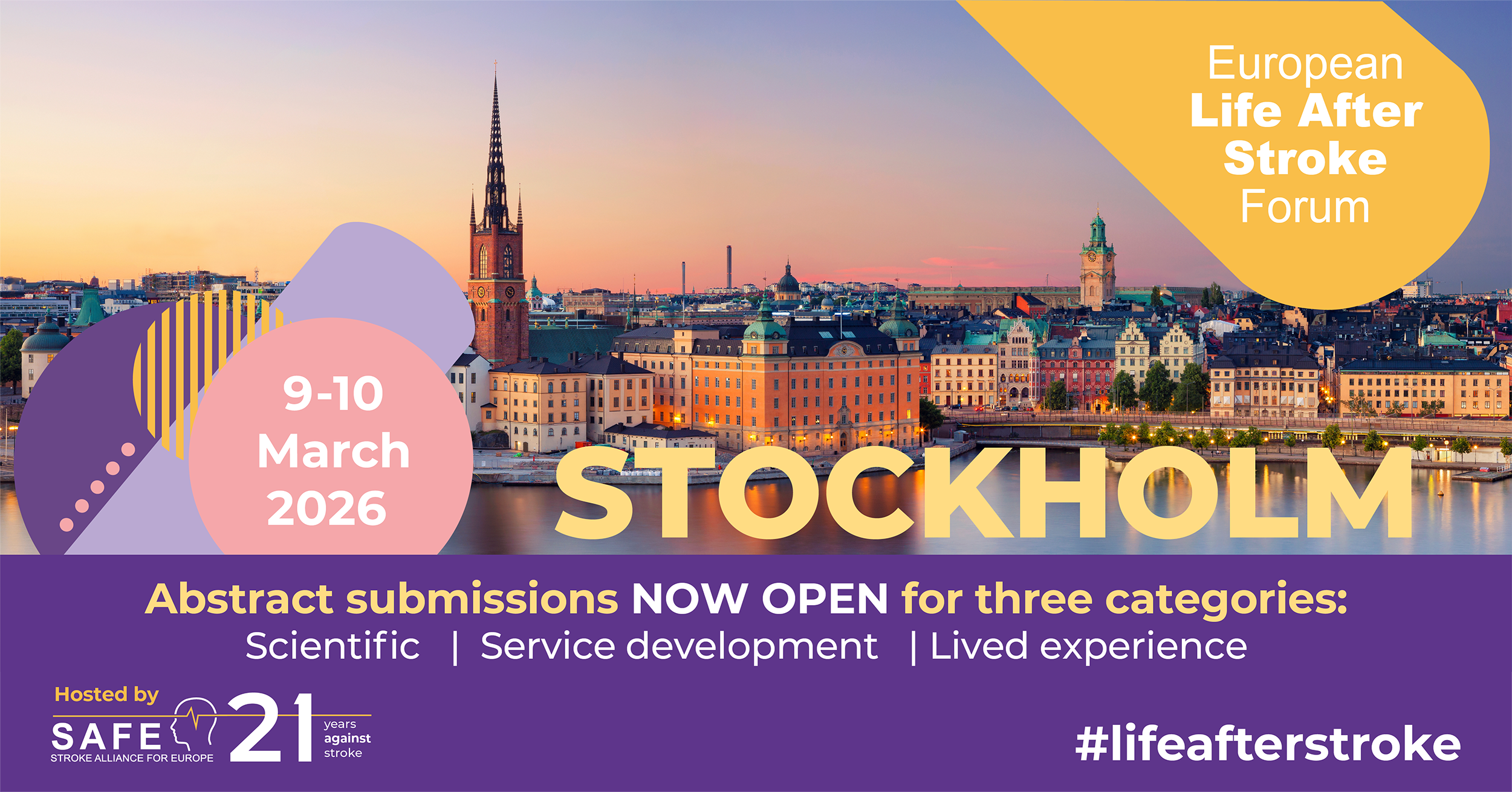
Jul 24, 2025
Our fourth in-person European Life After Stroke Forum in Stockholm provides an opportunity to contribute to this important research space. We are actively seeking abstracts across three categories:
- Scientific – for completed or ongoing research focussed on life after stroke.
- Service development – for innovative service developments in life after stroke that could benefit others.
- Lived experience – for people who have experienced a stroke or those who have supported a loved one through it to share their experiences in creating change.
Join an international community of experts, practitioners and people with lived experience, all working to advance stroke recovery and best practice.
Deadlines
Lived Experience – 8 August 2025
Scientific & Service Development – 7 October 2025

Jul 3, 2025
Join Global Leaders in Stroke Care at WSC 2025 in Barcelona
The World Stroke Congress (WSC) 2025, set to take place on October 22-24, 2025, in the vibrant city of Barcelona, marks a significant milestone for the stroke community.
For the first time in over 15 years, the congress will return to Europe, providing an opportunity to advance the global conversation on stroke prevention, treatment and rehabilitation.
This historic event brings together leading professionals, researchers, clinicians, policymakers and individuals with lived experience to collaborate on shaping the future of stroke care.
A Platform for Global Collaboration and Innovation
WSC 2025 offer a program designed to immerse attendees in the latest scientific breakthroughs and the most pressing issues in stroke research and treatment. From the frontlines of innovation to cutting-edge science, the congress feature a range of topics including:
- Intracranial Atherosclerotic Disease (ICAD)
- Large Artery Disease
- Cardioembolism
- Cerebral Venous Sinus Thrombosis (CVST)
- Stroke in the Young
- Rehabilitation and Recovery
- Embolic Stroke of Undetermined Source (ESUS)
- Revolutionary Research Methods
- Hyperacute Stroke Treatment Advances
- Neuroimaging Innovations & Intracranial Hemorrhage Management
This year, WSC 2025 has crafted its program based on a deep dive into the most impactful research and groundbreaking publications from leading stroke and neurology journals. Attendees will gain exclusive access to insights and discoveries directly from those shaping the future of stroke care.
Building a Global Movement for Stroke Care
WSC 2025 is an opportunity to engage with trailblazers in the field, discuss current challenges and solutions, and be part of a global movement to transform stroke prevention and treatment.
The congress will place a strong emphasis on global collaboration, advocacy, diversity, equity and inclusion, ensuring that stroke care continues to improve worldwide. One of the key focuses will be providing opportunities for early career investigators to network, receive mentorship and further their professional development in the field of stroke research and clinical practice.
The program for WSC 2025 is now available, and early bird registration is open! Attendees who register by August 5, 2025, can take advantage of special early bird rates.
Register today and be part of this historic event in the fight against stroke: https://worldstrokecongress.org/registration
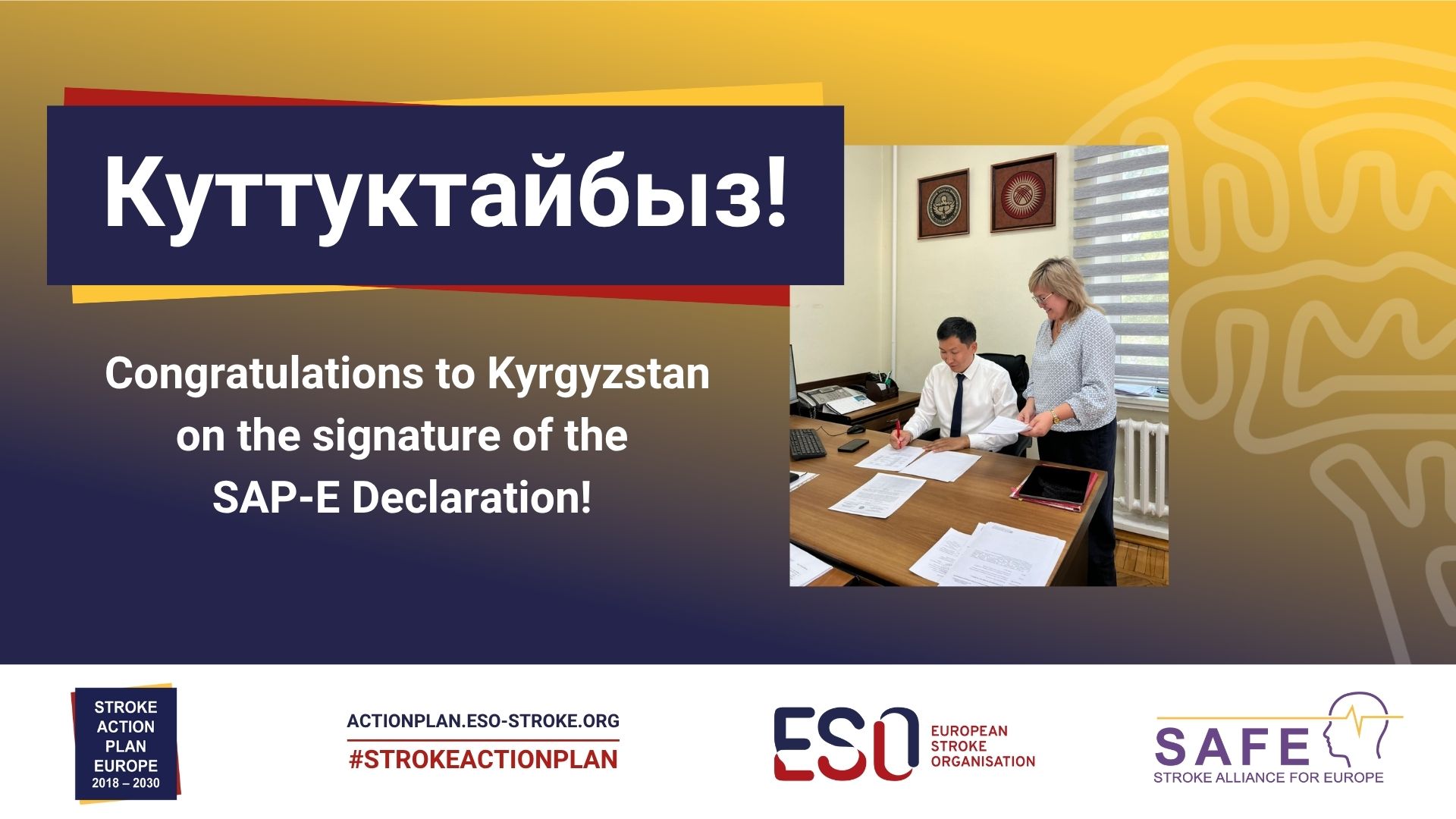
Jul 1, 2025
Congratulations!
Kyrgyzstan is now the 15th country to endorse the Declaration for Action on Stroke, marking a significant step towards improving stroke care, prevention and recovery services for its population.
By signing this declaration, Kyrgyzstan’s government demonstrates its commitment to recognising stroke and other cerebrovascular diseases as leading causes of premature death, long-term disability and cognitive decline among adults. The declaration emphasises that many strokes are both preventable and treatable through evidence-based, cost-effective interventions.
With this endorsement, Kyrgyzstan pledges to fully support the implementation of the Stroke Action Plan for Europe, aligning with its four key targets for 2030 and the broader goals of the WHO Global Action Plan for the Prevention and Control of Noncommunicable Diseases.
Read more here.

Jun 20, 2025
We are pleased to announce that the fourth in-person European Life After Stroke Forum will take place in Stockholm on 9-10 March 2026.
The Forum is a unique event where healthcare professionals, researchers, policymakers and those affected by stroke can come together to address the issues of life after stroke. Our programme will be filled with the latest research, best practice and shared insights with the voices of people with lived experience at its heart.
We are actively seeking abstracts in three categories:
- Scientific – for completed or ongoing research focussed on life after stroke.
- Service development – for innovative service developments in life after stroke that could benefit others.
- Lived experience – for people who have experienced a stroke or those who have supported a loved one through it to share their experiences in creating change.
For more information or to submit an abstract, please click to visit our website.

May 21, 2025
Thank you to all those that came to the European Life After Stroke Forum in Prague on the 10-11 March. We are delighted to have so many of the European Stroke Community come together to continue to improve Life After Stroke. If you were not able to join us in Prague or would like to re-visit the best moments, we have included the links to the post-event materials that are available on our website below.
Click to view event slides
Click to view programme
Click to view scientific and service development abstract book
Click to view lived experience abstract book
Click to view forum report
Click to view photo gallery

